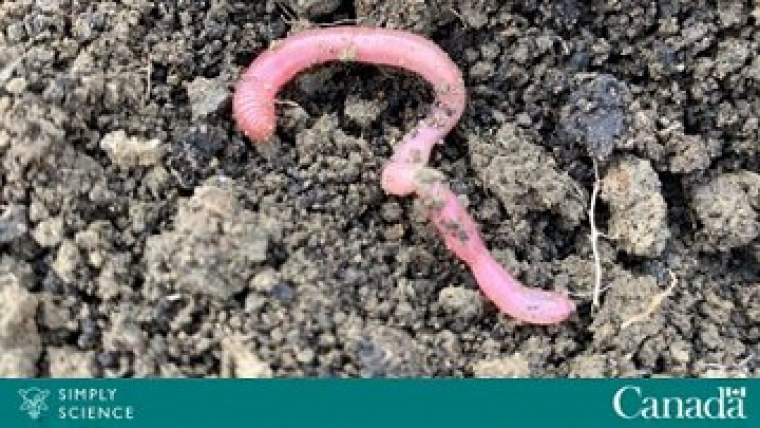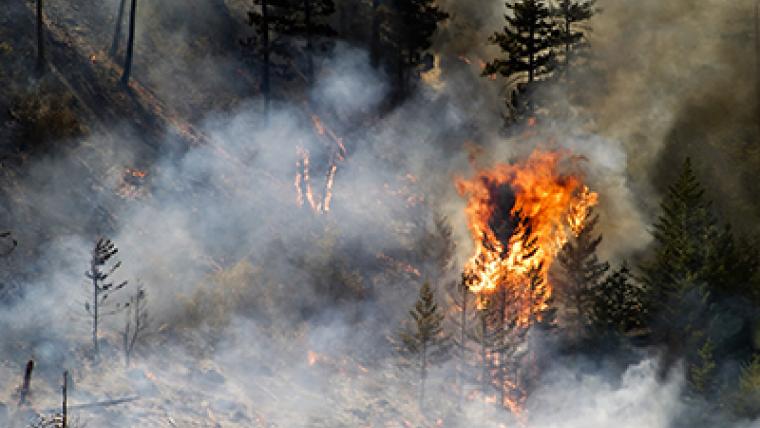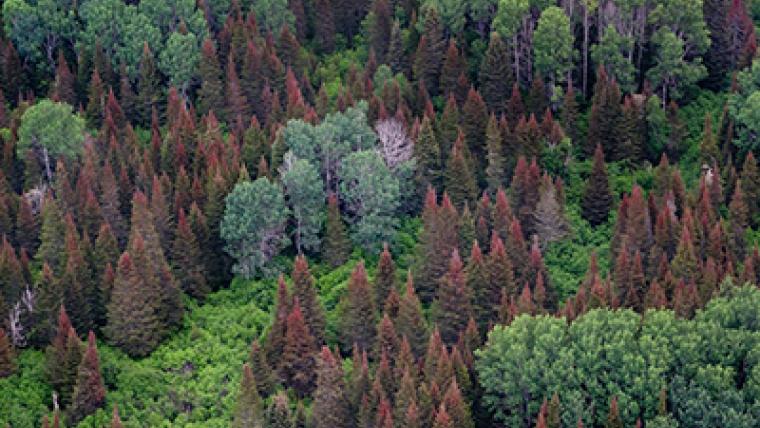Protecting Canada’s forests from uninvited pests
February 2021
Canada’s forests are under threat and some invaders have names that sound like they were ripped from the pages of a comic book: Anoplophora glabripennis, Agrilus planipennis, and Tetropium fuscum, also known as the Asian longhorned beetle, the emerald ash borer, and the brown spruce longhorn beetle. They’re masters of deception, known flight risks and some of the most destructive invasive species ever seen in Canada.
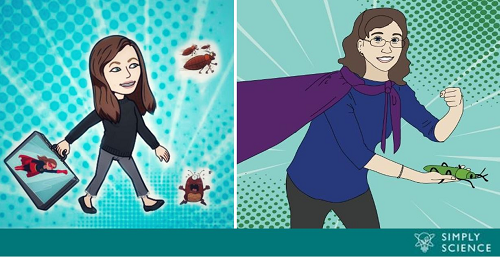
Invasive, destructive pests of all kinds are no match for Canada’s superhero team of scientists working to preserve plant health for future generations.
Invasive pests can be so hazardous that there’s a team of experts from across federal government departments to help keep them in check. Meghan Noseworthy, a science research manager from Natural Resources Canada’s Canadian Forest Service (CFS) leads the Pacific Forestry Centre phytosanitary research team. She works with Mireille Marcotte, the national manager of the plant health surveillance unit of the Canadian Food Inspection Agency (CFIA), our nation’s plant protection organization. Their mission? Help preserve plant health for generations to come.
Why now?
Traditional approaches to pest management and eradication are facing challenges – especially the use of single treatment pesticides, or fumigants. Prevention now focuses on new science, preventing pests from getting here in the first place.
“We provide science to help reduce the risk of spreading plant pests globally. In this way we protect Canada’s forests, economy and global plant health.” says Meghan. Understanding insect biology, forest ecosystems, wood products, international trade and modes of transportation can help reduce their spread.
These pests are quick to spread and they’re determined, fighting for their survival. “That’s why this team needs to identify infestations very early so we can act on them,” says Mireille of the CFIA. “And in some cases take action even before a nasty pest is seen crossing the border.”
Mireille is often one of the first to know when an invasive pest is found in Canada. She alerts the CFS, and the team of entomologists, molecular ecologists and mycologists get to work. They work with the CFIA pest risk assessment unit to determine how quickly the pest could spread, what damages could be expected, and whether or not there are any natural predators. Then they draft a plan, which might include using tools such as pheromone-based traps and branch sampling for detecting new infestations and suggesting economic models to help urban foresters make decisions. Other times the plan means developing a botanical insecticide, or looking at introducing a parasitic species to tackle the invasive pest.
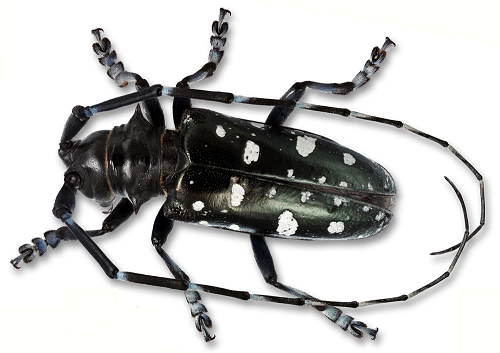
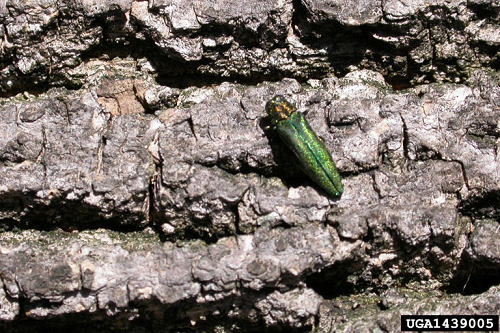
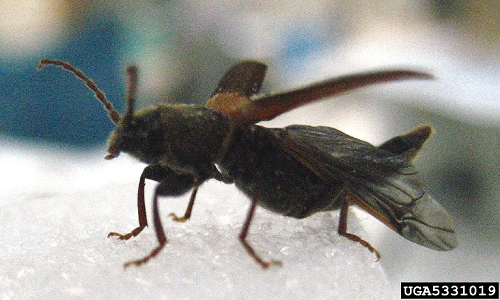
A few of the ‘most-wanted’ tree-killing insects invading Canadian forests include Asian longhorned beetle (Anoplophora glabripennis), emerald ash borer (Agrilus planipennis) and brown spruce longhorn beetle (Tetropium fuscum). It is believed they arrived among packing materials shipped from Asia. Source: Taylor Scarr, NRCan, Stephanie Sopow for RNCan, bugwood.org.
How do they get here?
Planes, trains, automobiles, cargo ships, invasive pests are not choosy. International trade is the number one way that pests travel. They can easily hide in the roots of imported plants, going undetected, making it difficult to regulate. Root feeding weevil eggs, for example, may be difficult to see even on bare root plants. Another newly recognized path for invasives entering Canada is on, or in, shipping containers found inside transportation vehicles like cargo ships. As an example, moth species may lay eggs on the outside of shipping containers and make a long voyage across the ocean in time to hatch and disperse into our novel plant environment. “Work has been done to shut this pathway down but there is more to do,” says Meghan. “Both the CFS and CFIA work with industry and our trading partners to facilitate safe trade and reduce the movement of plant pests.” International guidelines like the International Standard for Phytosanitary Measures (ISPM) 15 specifies treatments for wood packaging such as pallets and crates and has significantly reduced the number of pests moving internationally with traded goods.
Once in Canada, they can spread by hiding in firewood. That’s why you’re encouraged to ‘burn it where you buy it’. Invasive pests can even catch a ride on wooden souvenirs tourists bring back from vacation.
What’s at stake?
Some pests are never detected as they find their niche and don’t cause much damage. However, others can be very serious and have the potential to decimate forests. The emerald ash borer for example, has killed millions of trees in North America, and is still a serious threat to all existing ash trees.
On the flip side, forest pests can also put Canadian international trade at risk. If a quarantined pest establishes itself in Canada, importing countries could then ban our forest products or require us to treat our products before exporting, which is costly. The CFS phytosanitary research group in collaboration with the CFIA play a major role in developing international standards and NRCan scientists provide much of the background to ensure domestic and international regulations are science-based.
Community Science: look around
Ready to get involved? Whether it's discovering plant pests in your backyard, or keeping bad bugs from hitching a ride on your firewood, you can help. “It’s even more important during COVID-19, as researchers can’t get around as much to do their field work,” says Mireille. “So you can locally check in your yards or streets and if you notice any unusual damage on trees, you should report that to local authorities.”
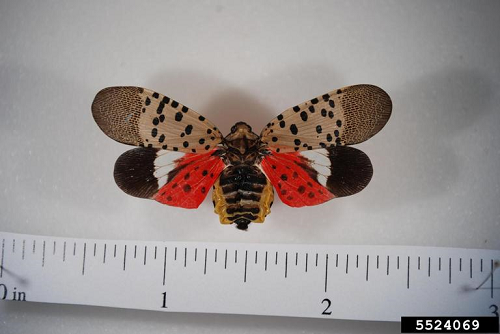
Experts have their eyes on the spotted lanternfly, a very destructive and distinctive looking pest. Photo c/ Pennsylvania Dept. of Agriculture Bugwood.org
What’s next on the ‘most-wanted’ list?
Both Meghan and Mireille agree that the spotted lanternfly is at the top of their watch list. It was introduced in Pennsylvania in 2014 and it’s spreading north. This destructive pest can cause serious tree damage, including oozing sap, wilting leaf curl and dieback. “We know it’s coming,” says Mireille. And they’re already working on prevention. “It’s very showy, very different from anything we have in Canada. We are working with different partners and stakeholders to raise awareness about this pest in hope to detect it early should it enter Canada.” Just like in a comic book, there’s always another villain, or invasive pest, around the corner.
- Read: What’s hiding in your furniture?
- Listen: Eradicating the Asian Long Horn Beetle
- Explore: International Year of Plant Health
- Learn more about invasive species and firewood
- Learn more about Mireille Marcotte’s research on Researchgate
- Learn more about Meghan Noseworthy’s research on Researchgate
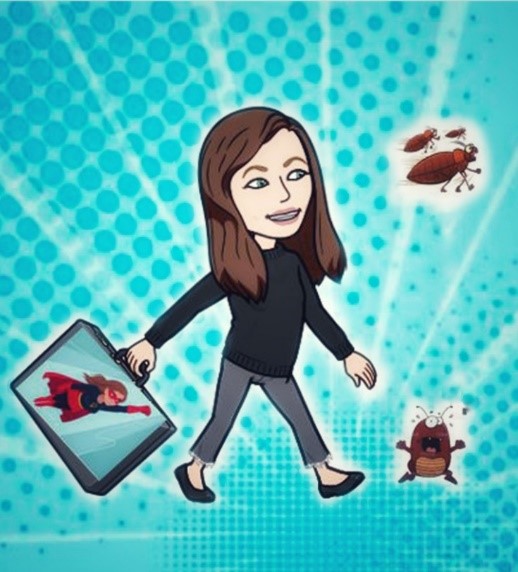
Meghan Noseworthy
Lab location: Pacific Forestry Centre
Superpower: Finding science solutions to difficult forestry issues
Superskills: Bringing people together to work on challenging problems
Mission: to prevent alien invasive pests from moving in forest products
Nemesis: cryptic hitchhiking pests
Fun Science fact: Some woodborer larvae can live for 60 years in dry wood
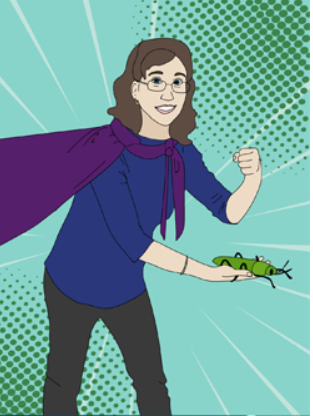
Mireille Marcotte
Lab location: Plant Health Science Directorate
Superpower: Promoting collaboration for early detection of plant pests
Superskills: Leverage opportunities as they arise
Mission: Educate the public on what they can do to limit the spread of plant pests
Nemesis: Plant pests
Fun Science fact: A full moon can increase mosquito activity by 500 percent!
Page details
- Date modified:
